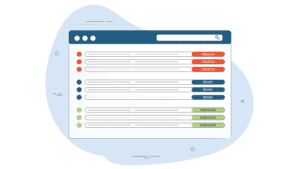
Traditionally, procurement is considered a function that operates independently, slashing costs where possible. While reducing spend is a big part of the job, today’s procurement professionals are strategic players in a cross-departmental push toward long-term success. Here’s how to reduce costs.
[bctt tweet=”While reducing spend is a big part of the job, today’s procurement professionals are strategic players in a cross-departmental push toward long-term success” username=””]
The Purchasing Chessboard was developed in 2008 by AT Kearney to improve procurement processes. We touched on the chessboard briefly in the video, but below, we’ll offer a quick look at how these strategies, levers, and the whopping 64 methods can be used to transform procurement into an innovative, future-proofing function.
[content_upgrade cu_id=”4228″]Free Download: 5 ways to get more out of the Purchasing Chessboard[content_upgrade_button]Click Here[/content_upgrade_button][/content_upgrade]
The Four Strategies
Traditionally, procurement departments have focused on sourcing goods at the best possible price. AT Kearney developed this multi-layered approach to identifying a strategy, then drilling down to develop a super-targeted approach to cutting costs. In all, combining these three layers means systematically tackling a problem.
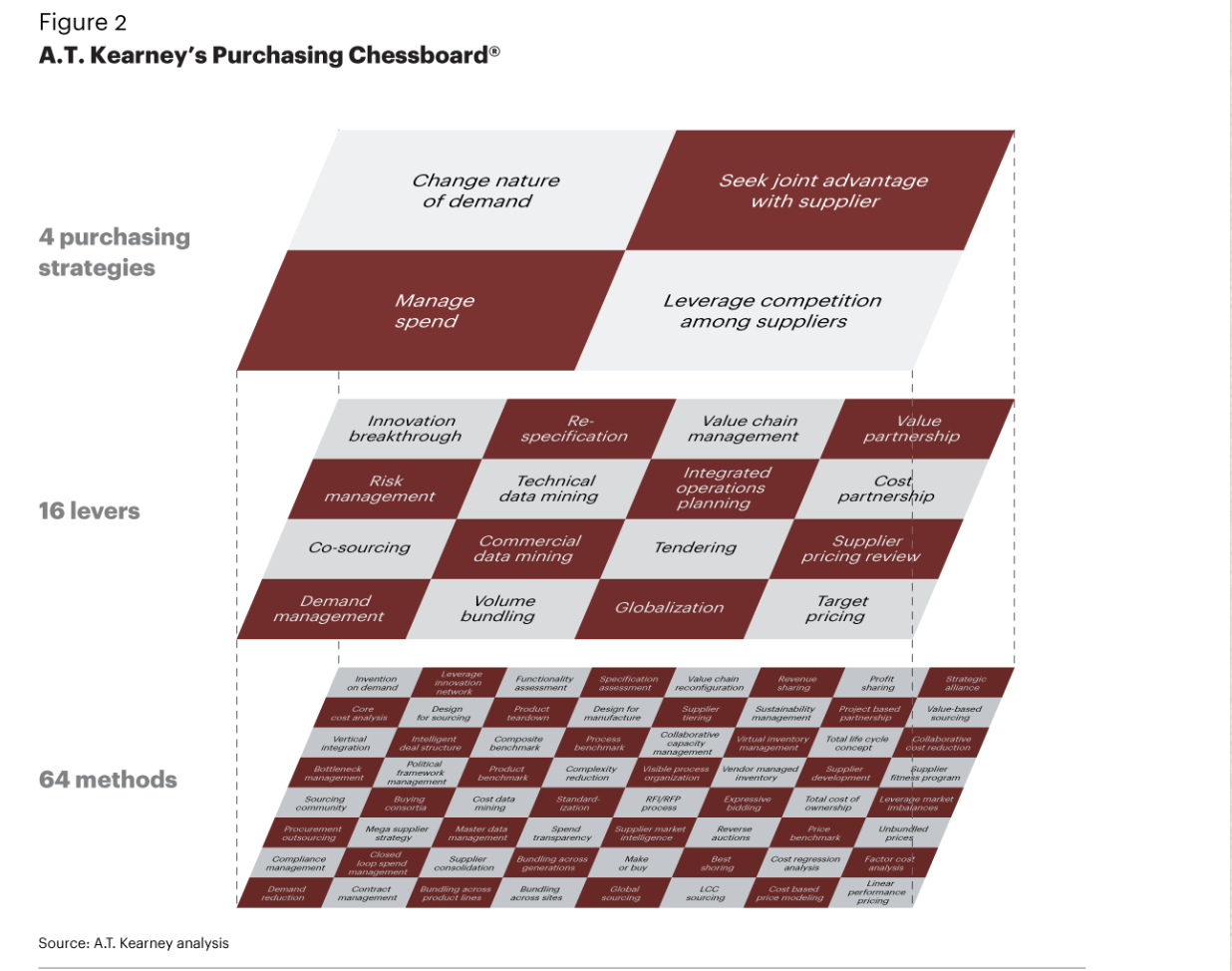
Within this chessboard concept, you’ll start off with four basic strategies. They represent the different ways that market conditions can impact your bottom line, and give you an abstract starting point for developing a strategy to reduce costs.
Here is a brief explanation of each:
1. Change the Nature of Demand
When supplier power runs high, one strategy is changing the nature of demand. What this means is, you’ll need to determine to what extent your company can modify your technical specifications so you don’t have to depend on one supplier that has all the control.
2. Seek Joint Advantage with Your Suppliers
If supply power and demand power are high, one approach is seeking out joint advantages with the supplier. This might involve coordinated demand and capacity planning, as well as an integrated value chain. This strategy involves developing and maintaining a close relationship with the supplier and the intensity of the relationship can vary considerably.
3. Manage Spend
Spend management is a way to steer demand when there is low supply and demand power. To do this successfully, you’ll need to have detailed knowledge of who is buying what items from which supplier.
4. Leverage Competition Among Suppliers
This strategy is popular in the high-demand, low-supply market and essentially depends on pitting your suppliers against one another. In this instance, a buyer might fuel competition by using data analysis to influence pricing.
The 16 Levers
Let’s say you select one of the four basic strategies we’ve outlined above. From there, you’ll need to then settle on how to approach the solution.
That’s where the 16 levers come in. The levers refer to the approaches you can use to discuss potential solutions with other departments.
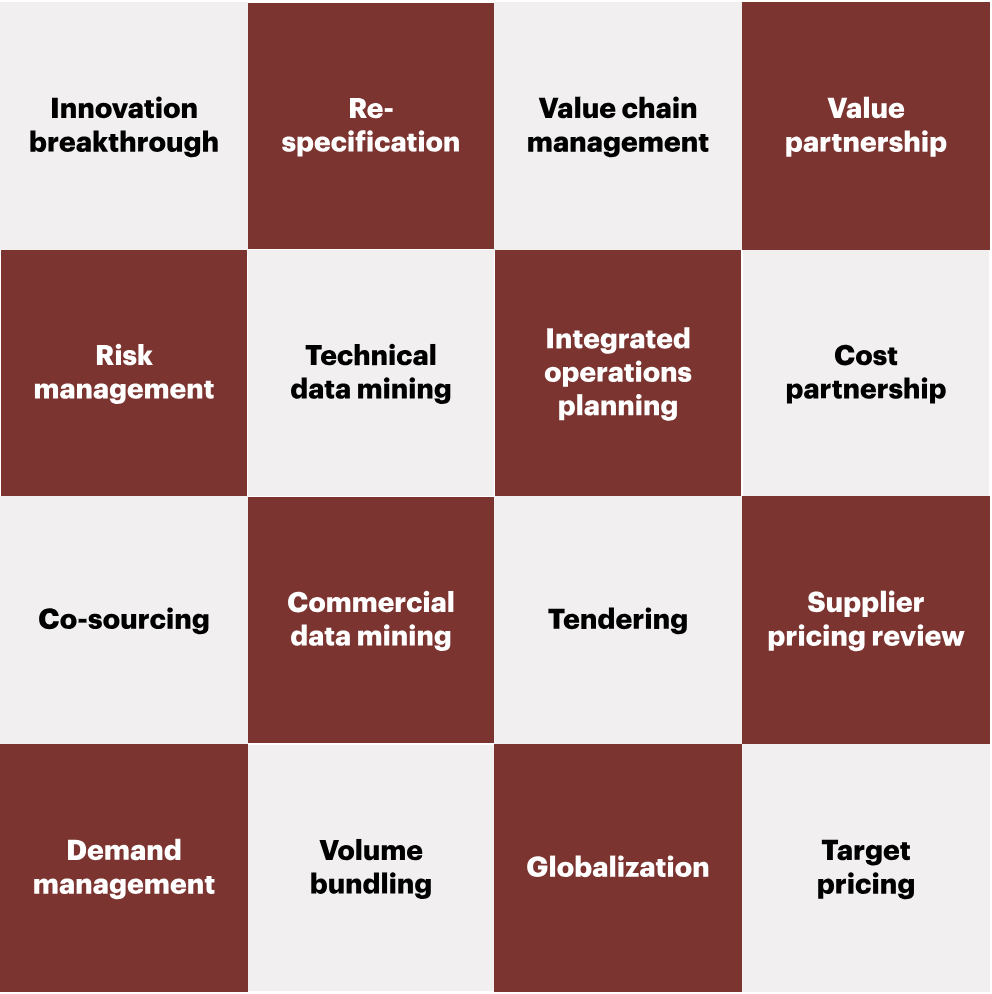
So if your goal is to change the nature of demand, you might work with R&D to come up with alternative materials for a product allowing for more purchasing flexibility. Here the lever would be innovation breakthrough.
Another example: if the goal is to seek joint advantage with suppliers, you’ll maybe speak with your CFO about what a value partnership looks like. Commercial data mining would involve diving deep into your databases to identify pricing patterns or which vendors are overcharging you on freight and fees. Here, you’d seek out your company’s data analyst.
The point is, the levers put your chosen strategy into action, in language that non-procurement colleagues can easily understand.
The 64 Methods
The last layer in this chessboard is the 64 methods you can use after deciding on an overarching strategy and how you want to approach the process. The beauty of the Chessboard is, you can use most of these methods with any strategy or lever, which can make for some truly out-of-the-box solutions.
Here are 64 practical ways to reduce costs, as represented on the Chessboard:
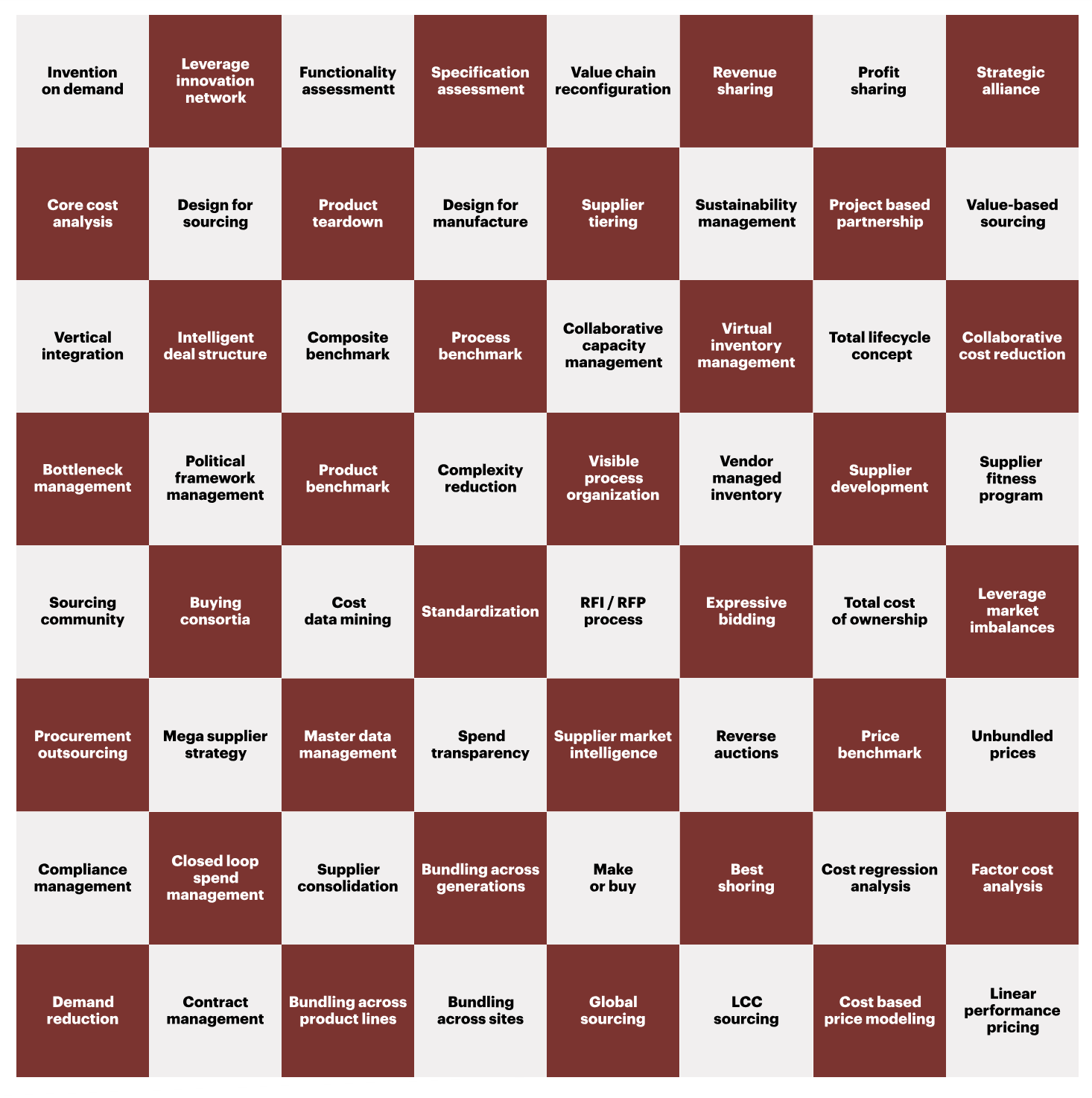
The idea is that each tier gets more specific. This chart below categorizes each method under one of the four overarching strategies, but that’s not to say you can’t mix and match the various strategies, levers, and methods in nearly endless configurations.
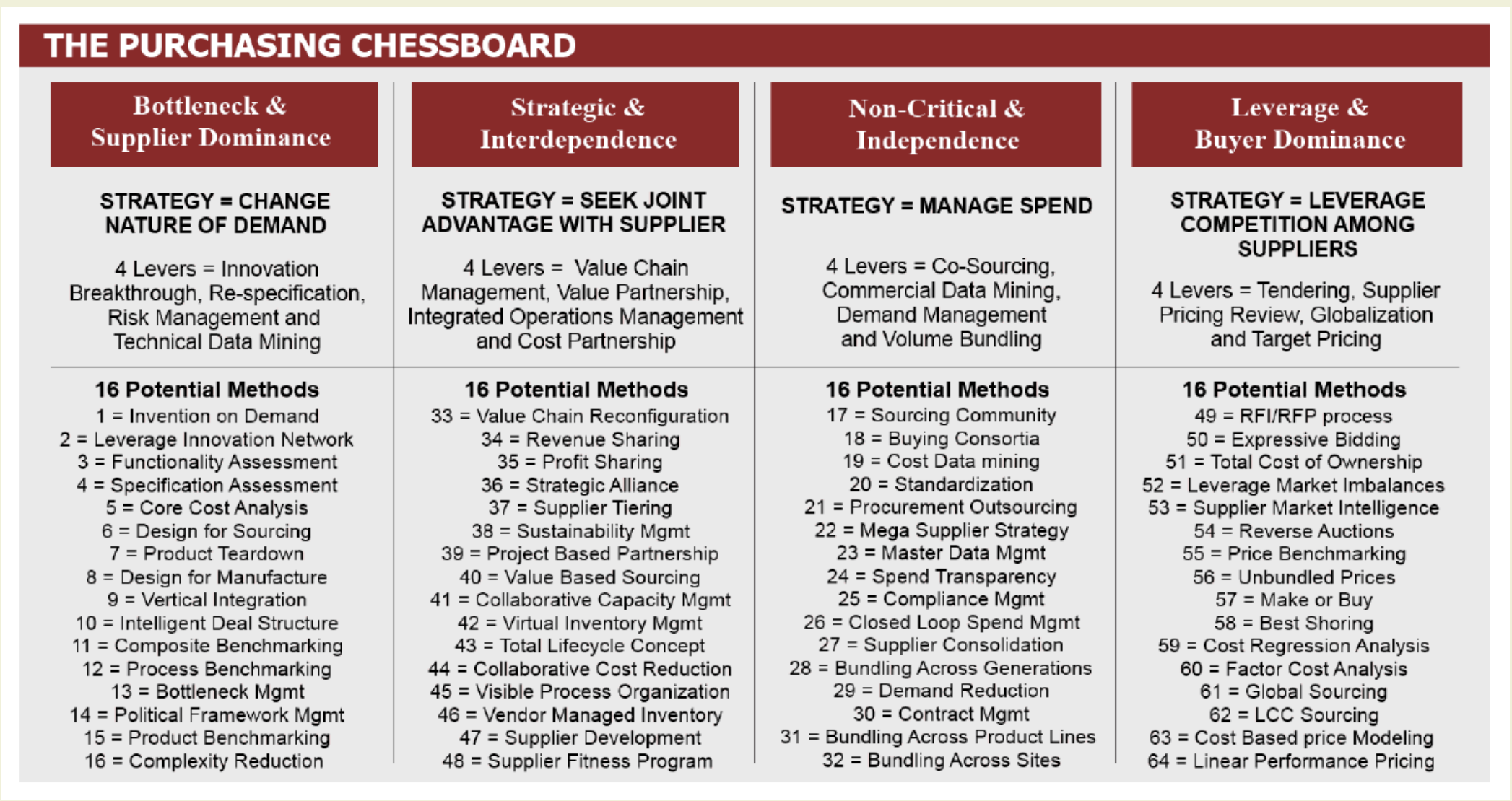
Finding the best procurement strategy for your business is something that now requires a scientist’s precision. With the Purchasing Chessboard, buyers can set a buying strategy for their product or service by looking at variables such as:
- How they treat suppliers
- Which sourcing approach to use
- Impact of price and non-price variables
- Attention given to a specific product
Essentially, you’ll get a map of how you might go about reducing costs and planning for the future, as well as how you work with other departments to lock in success. Maybe you choose to Leverage Market Imbalances. In that case, your goal is to identify imbalances in the system such as currency fluctuations or variable price mechanisms.
You’re continually tracking changes in the market and waiting for opportunities to exploit them. This also means getting together with other internal stakeholders like finance or the CEO to decide when it makes sense to pull the trigger.
If you’re using a Bottleneck Management strategy to save money, the focus is going to be on developing a better program management process by working with multiple suppliers with the same capabilities as existing suppliers, obtaining delivery forecasts, and improving communication between buyer and supplier.
Savings come from the ability to mitigate any potential bottlenecks, thus decreasing delays that cut into profitability. Here, procurement needs to connect with project managers and accounting to set a schedule. Project management will discuss when they need materials, while accounting will provide insight on when ordering schedules lineup with cash flow.
With 64 Methods, How Do You Choose?
Finding out where a supplier and their products fit on the chessboard requires strategic thinking, you know, like actual chess. First review some strategy considerations:
- Cost of switching
- Availability of substitutes
- Buyer bargaining power
- Proprietary technology
- Barriers to entry
- Concentration of suppliers
The Chessboard acknowledges that the buyer’s approach is dependent on the state of the market, so goods and services are bought based on supply power and demand power. The four strategies present a generic, zoomed-out starting point. Here, it’s easy to pick a strategy, as this is dictated by who has the power.
For example, if both buyer and supplier power are low, your goal is to manage spend. You can drill down into the next level and say, “okay, maybe cut costs by way of demand reduction or through bundling purchases.”
In this version of the Chessboard, AT Kearney breaks down the 64 methods on the supply and demand power axes. The top half represents long-term planning strategies, whereas the bottom represents practical ways to reduce costs today.
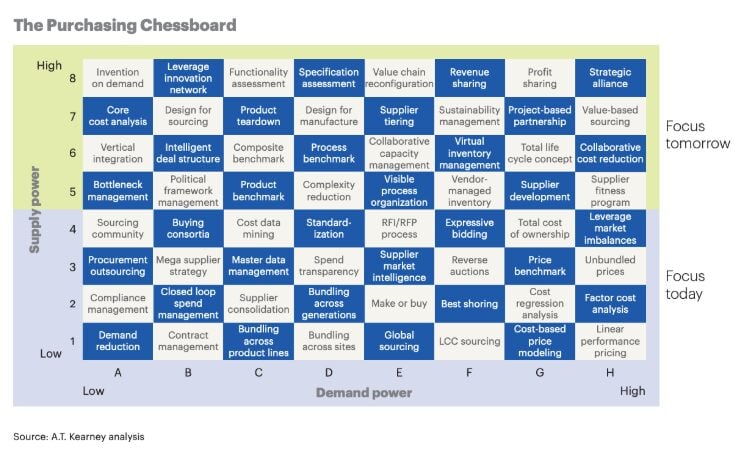
Again, looking for places to reduce costs should start with identifying the market conditions. Ideally, you’ll develop strategies that address immediate cost savings and those that help you maintain power long-term.
Leverage the Chessboard with Real-Time Reporting
Finally, the Purchasing Chessboard puts procurement strategy into language the CFO can understand. This is important because it gives procurement the ability to demonstrate financial value to other stakeholders, making it easier to get buy-in from other departments.
We know that getting everyone on the same page is a key element of a successful strategy. That’s where ProcurementExpress.com comes in. Using our software, teams can track spending in real-time and use those figures to inform their next move on the Chessboard.
Try it free by clicking the link.
[content_upgrade cu_id=”4228″]5 Ways to Make the Most Out of the Purchasing Chessboard — click here for the free download[content_upgrade_button]Click Here[/content_upgrade_button][/content_upgrade]


